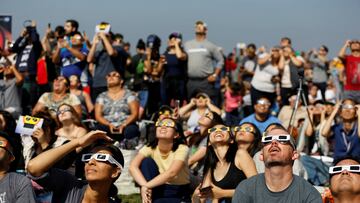SPACE
Which 13 states will see the total eclipse in 2024?
Next years solar eclipse is expected to be seen in more states compared to the one happeneing 14 October in 2023, providing a great chance for stargazers.

People have been spoilt this year by the sheer amount of extraterrestrial sights. There have been three eclipses so far with another one right around the corner.
If you thought this might mean fewer for 2024 then you are mistaken. On 8 April, 2024, another eclipse will plunge a significant part of the US into darkness. A major difference to an annular solar eclipse is that the 2024 installment will feature up to 4 minutes and 27 seconds of total darkness.
If you are living in the following 13 states then you will be able to experience it, a staggering 31 million people in total.
The states the 2024 eclipse will travel through (in time order)
- Texas
- Oklahoma
- Arkansas
- Missouri
- Illinois
- Kentucky
- Indiana
- Ohio
- Pennsylvania
- New York
- Vermont
- New Hampshire
- Maine
The US is not the only North American country that will be able to see the eclipse: Canadians and Mexicans will be able to see it too.
If you simply cannot wait for six months time, another eclipse will be visible very soon (unless you are reading this in the future!)
Where can the eclipse of 14 October, 2023 be seen?
The incredible phenomenon will be visible in six US states: Oregon, California, Nevada, Utah, New Mexico and Texas. According to NASA calculations, the eclipse will start at 8:06 a.m. PT in Oregon and will end in Texas at 1:33 p.m. CT.
- Oregon: Starts at 8:06 a.m. PT and ends at 10:39 a.m. PT
- California: Starts at 8:06 a.m. PT and ends at 10:43 a.m. PT
- Nevada: Starts at 8:06 a.m. PT and ends at 10:48 a.m. PT
- Utah: Starts at 9:09 a.m. MDT and ends at 11:56 a.m. MDT
- New Mexico: Starts at 9:13 a.m. MDT and ends at 12:09 a.m PT
- Texas: Starts at 10:23 a.m. CT and ends at 1:32 p.m. CT
So, happy stargazing!






